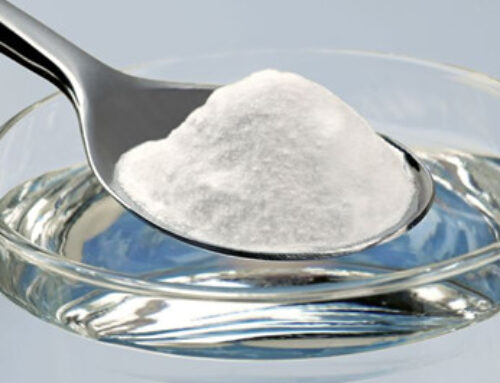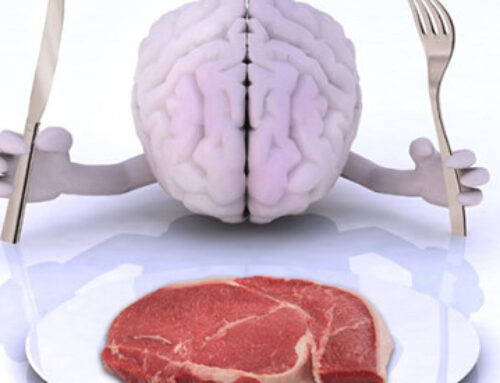This is a companion article to my Four Reasons we have Inflammation post. Inflammation is such an important subject it requires further discussion. In this article I give you the low-down on the food that causes the most inflammation in the body: wheat.
Wheat has been called the staff of life but a client once pointed out to me that a staff is designed to prop you up. Maybe we should learn to stand without the aid of a staff! Wheat is made up of thousands of proteins but the protein that causes the most trouble is gluten. The modern-day version of wheat grown in the U.S. seems to be the culprit responsible for much of the gluten-related health issues we see today. It has a hundred times more gluten than the wheat our ancestors ate a century ago, causing a host of health problems in sensitive individuals.
It seems to be very difficult for people to make the connection between the inflammation they see and feel in their bodies and the wheat consumed at almost every meal in one form or another. You don’t have to eat large amounts of wheat to have problems. Once a person has become sensitive to wheat, the smallest amount is enough to launch an inflammatory response. Once a protein is tagged, the response is the same no matter the amount.
People who have problems with wheat are often referred to as gluten intolerant but many others are gluten intolerant and do not show overt symptoms. The inflammation caused by gluten intolerance can be silent, sometimes taking years to show up. This is the most dangerous kind of gluten intolerance because we are not able to recognize the damage taking place. If silent inflammation occurs in the brain, the result can be seen in later years as dementia. Silent inflammation can damage the cardiovascular system, causing heart disease and cardiovascular inflammation. It can damage the joints and cause inflamed, swollen and arthritic joints, damage the respiratory system causing asthma, damage the thyroid where hypothyroidism and gluten seem to go hand in hand and especially damage the gut, causing many types of gut disorders like Crohn’s disease, IBS, ulcerative colitis and other symptoms which leave those afflicted feeling bloated and uncomfortable.
The word gluten comes from the Latin word for ‘glue’ and refers to the mix of proteins found in the kernel. These proteins are further classified as either gliadins, glutelins or others. Wheat is a hexaploid species because it is the product of three ancestral species coming together through hybridization. This means there are six sets of chromosomes and 6.5 times more genes in gluten than found in the human genome, causing an amazing and potentially dangerous mix of 23,788 different combinations of proteins found in wheat plants (ref. Davis). Even one of these proteins can trigger an immune response in our body. Many of these proteins are double bonded, or glued together, which makes it very hard, if not impossible, for our digestive system to break them down. When one or more of these proteins are not broken down with digestion, either because digestion is not working well (very common) or because the novel protein is not recognized as a food (also pretty common), our immune system may see this protein as something that does not belong. This causes the immune system to launch an attack. The immune system can become confused and begin to attack healthy tissues, creating a tremendous amount of damage to the body including inflammation and autoimmune diseases.
Wheat has the ability to activate a protein in the body called zonulin, discovered in 2000 by Alessio Fasano, the foremost researcher in celiac disease. Zonulin has the ability to open and close the spaces between intestinal cells and allow particles of undigested food to pass into the blood stream, along with bacteria, viruses and parasites. Even the healthy bacteria in our intestines and the metabolic waste they create can cause problems when the wall of the intestine is made permeable by wheat. We are not biologically designed to handle undigested food proteins and microbes that get into our blood stream. They trigger the immune system and create even more food sensitivities.
This article would not be complete without a discussion of celiac disease. Celiac disease is on the rise, thanks to the strain of wheat we eat today. Though the condition can be genetically inherited, some researchers believe there is a correlation between celiac disease and our modern-day hybridized wheat plants, designed with the maximum amount of gluten to be profitable and shelf-stable. Though it used to be a rare disorder, the prevalence of celiac disease has increased over 400% since the 1950s (ref. Davis).
Celiac disease is an autoimmune disease that causes inflammation in the small intestine and eventually destroys its absorptive cells. It causes devastating health problems, including malnutrition when nutrient absorption is impaired. Sufferers of celiac disease present with symptoms such as diarrhea, cramping, infertility, migraines, depression, chronic fatigue, osteoporosis, and other symptoms. A certain portion of celiac suffers will have no symptoms but present with neurological problems like dementia and intestinal cancer in their later years.
On a personal note, I gave up wheat about nine years ago. I had some pretty intense symptoms such as severe muscle weakness in my legs, headache, depression, thinning hair, chronic belly ache and about ten extra pounds I just could not ditch! I knew something was terribly wrong but could not get to the bottom of what was making me so miserable. One day I read an article and it listed some of the symptoms of gluten intolerance. I had them all. The next day I stopped eating wheat in all of its forms. Within three days I had the strength back in my legs and my belly ache was gone. After ten days, I had lost six pounds. Shortly after discovering my wheat intolerance I was tested and found not to have celiac disease, but the gluten intolerance I do have makes me miserable when I consume wheat products. After nine years I don’t miss the bread, cakes, cookies, pasta, and pizza (well, maybe the pizza just a little…). The trades off in health benefits are immeasurable. Some people will try to get me to taste something made with wheat but I won’t make the mistake. I’m not even temped because it’s just not worth it.
Suffers of celiac disease and gluten intolerance must make the difficult decision to ditch wheat or suffer the host of possible symptoms. Listening to your body is the best approach and will protect you from the long-term consequences of silent or overt inflammation.
Also see the companion article: Four Reasons we have Inflammation
Cited References:
- Davis W, Wheat Belly: Lose the Wheat, Lose the Weight, and Find Your Path Back to Health. Emmaus Road Publishing, Penn: Rodale; 2011. ISBN: 978-1-60961-154-5










